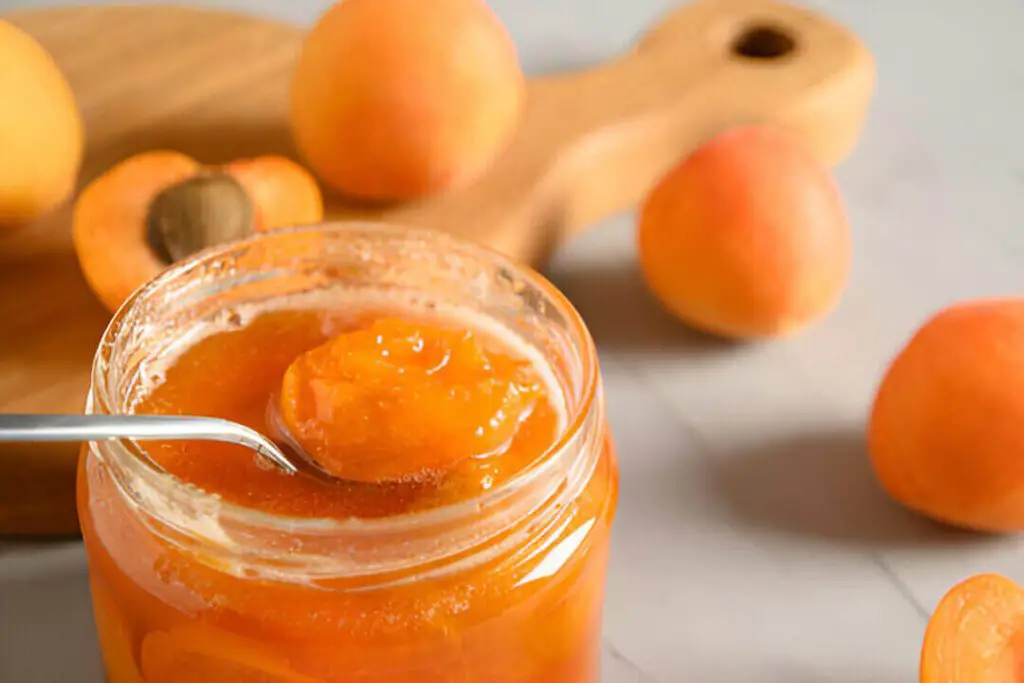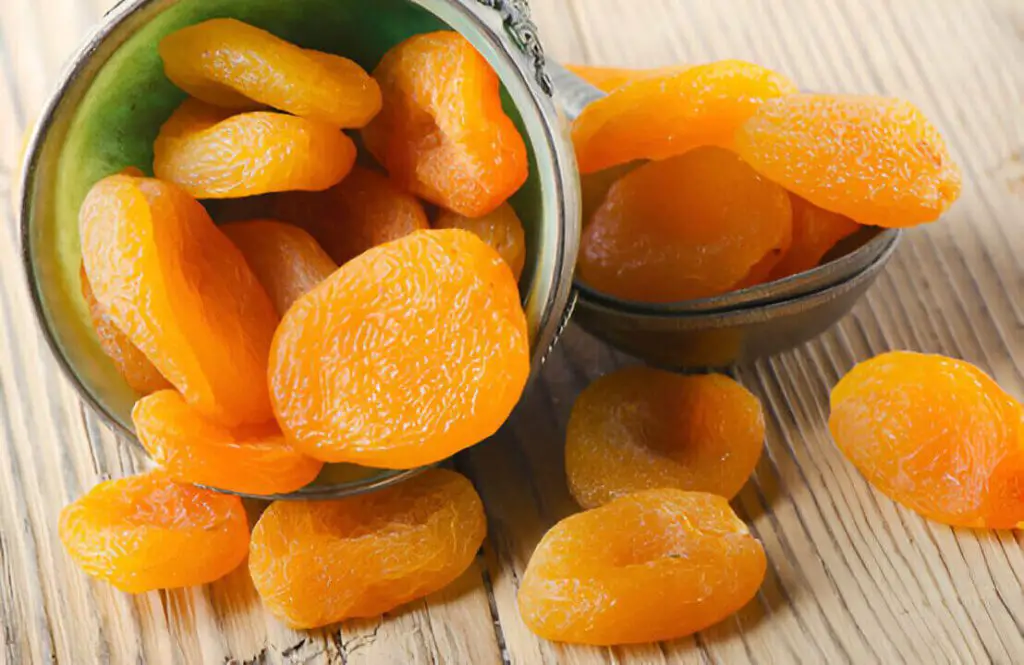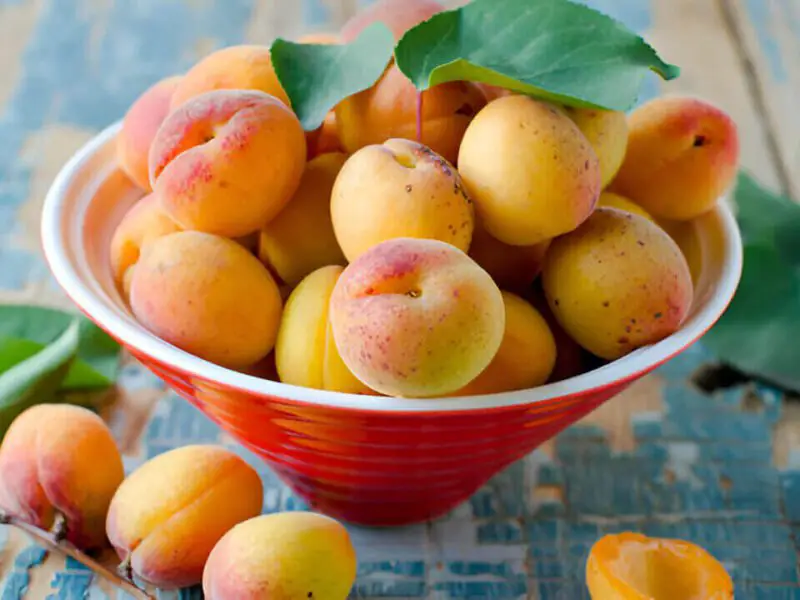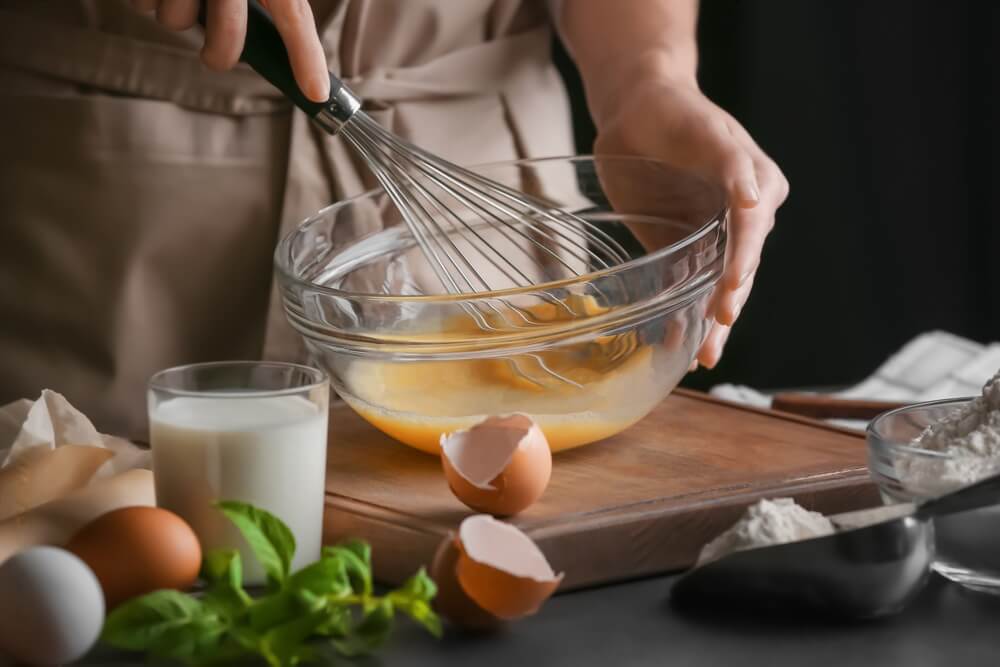Stumped by the funky-looking orange fruit at the grocery store? Wondering what apricots taste like, and if you should take a chance on that jar of dried apricots. If you’ve never tasted an apricot before, that fuzzy exterior might seem intimidating. But let me tell you, apricots are straight-up delicious, and you’re missing out big time.
These unassuming little stone fruits pack a flavor punch unlike any other. Sweet? Absolutely. Tart? You bet. Juicy? You wouldn’t believe it. Apricots deliver a taste experience that’s bright, refreshing, and just a little wild. From their velvety skins to their sunset-colored flesh, apricots are summer in fruit form.
Still feeling skeptical? No worries, that’s what we’re here for. By the end of this guide, you’ll know exactly what to expect when you bite into an apricot. We’re pulling back the curtain on this underrated gem, covering everything from what they look and smell like to the best ways to eat them. Trust me, after learning apricots’ signature flavor profile, you’ll be hooked for life. Let’s dive in!
What Are Apricots?
Apricots are part of the stone fruit family, along with peaches, plums, and cherries. That means they have a single hard seed (called a “stone”) on the inside.
But don’t go thinking apricots are just peaches’ ugly cousins. While they may look similar on the outside, apricots have a totally unique flavor profile that sets them apart.
One key characteristic of apricots is that they’re incredibly seasonal. You won’t find these babies in grocery stores year-round. Apricot season is relatively short, running from about early May to late August. That’s just a few months to get your fresh apricot fix!
The good news is that apricots get preserved in lots of forms, so you can enjoy them any time of year. From dried apricots to apricot jams and jellies, this fruit lasts long past its peak season. You can even find apricots canned in light syrups or purees.
Now let’s talk about getting your hands on some fresh apricots during that summer window. The majority get sold while they’re still a little unripe and firm. This helps prevent them from getting all bruised and battered during shipping and transport. So when you pick up apricots at the store, they likely need a few days to fully ripen at home.
How can you tell if an apricot is ripe and ready to eat? Look for rich orange or red colored skin with just a slight fuzziness. The fruit should give just a tiny bit when gently squeezed, but it shouldn’t be overly soft or mushy. Any green tinting means it’s still underripe. Just let those guys sit out on the counter to work their magic.
How Do Apricots Look?
At first glance, apricots can look a lot like small peaches or oranges with their fuzzy, reddish-orange exterior. But if you take a closer look, you’ll notice some distinct differences in their appearance compared to other stone fruits.
Let’s start with unripe apricots. While they definitely don’t win any beauty contests at this stage, they have their own unique charm. The skin will range from pale yellow to greenish-yellow, covered in a velvety fuzz. The flesh underneath is still fairly firm and pale in color. Depending on the variety, some unripe apricots can even take on a slightly reddish blush on the outer skin.
But it’s when apricots reach peak ripeness that they really strut their stuff in the looks department. Ripe apricot skin transforms into a rich, fiery orange or deep reddish hue that’s just begging to be admired (and devoured). The fuzzy exterior becomes finer and smoother to the touch. And instead of pale insides, the flesh turns velvety and radiant, sporting gorgeous orange and red shades.
While their exterior may trick you, apricots are actually on the smaller side compared to their stone fruit cousins. Most varieties grow around 2-3 inches in diameter at peak season. They have a distinct rounded shape, somewhere between an oval and an orb, with a slight slant on one side where the stem was attached.
Cutting into a ripe apricot reveals even more pretty details. The vibrant orange flesh practically glows, with a single brown seed nestled into the center. This hard pit, or stone, is the hallmark of apricots and other drupes (fruits with a single pit, like peaches and plums). While you can’t eat the pit, the flesh surrounding it is the juicy, flavor-packed star of the show.
What Do Apricots Taste Like?
Apricots have a truly unique and hard-to-describe flavor that makes them stand out from other fruits.
When you bite into a perfectly ripe apricot, your taste buds are in for a wild ride. The first note you’ll experience is an unmistakable sweetness that dances across your tongue. Not cloying or candylike, but a pure, bright sweetness that’s delicate yet intense. It is almost like liquid sunshine captured in fruit form.
But the sweetness is just the opening act. Where apricots really shine is their signature tartness, which quickly follows. Imagine the most delightful pucker, like biting into a sweet-tart candy but without any of the artificial flavors. The sweet and tart notes mingle together in the apricot’s flesh to create a uniquely zingy, lively, and mouth-watering taste.
The texture of a ripe apricot is pure bliss as well. While the skin may look a little weathered, the flesh inside is velvety, smooth, and gives way easily with each bite. You’ll be treated to a luscious rush of nectar-like juices that accomplish the impressive feat of being both light and rich at the same time.
Some describe the flavor of apricots as a mix of peach, plum, and orange with floral hints. But even that struggles to fully capture apricots’ je ne sais quoi. It’s a taste you simply have to experience for yourself to understand its pure bliss.
Now let’s talk about what happens when you dry those sunshine bombs of flavor: the taste is amplified to the max. Dried apricots lose none of their signature bright, sweet-tart punch. If anything, the flavors become even more pronounced and concentrated into delightfully chewy morsels. The sweetness intensifies into something richer like honey or brown sugar, playing off the brighter citrusy tartness.
You’ll also encounter a wider range of textures in dried apricots compared to fresh ones. From soft and pliable to delightfully tougher “tooth-sinkers,” dried apricots run the gambit of chewiness. No matter the texture, though, that explosive sweet-tart flavor shines through in spades.
Using And Eating Apricots
From breakfast to dessert and everything in between, apricots are surprisingly versatile little fruits.

For starters, fresh apricots make an incredible addition to your morning routine. Slice them up over a bowl of overnight oats or Greek yogurt and their bright sweetness is the perfect way to greet the day. You can also blend them into smoothies or juices for a nutritious dose of fruity sunshine.
You can get fancy by baking apricots into breakfast treats like scones, coffee cakes, muffins, crisps for a burst of juicy fruit, or even French toast casseroles. You can also grill or sauté apricot halves until lightly caramelized and serve alongside French toast, pancakes, or waffles.
For lunch or lighter meals, fresh apricots add a juicy burst to salads of all kinds. They play remarkably well with cheeses like feta or goat cheese. You can try them with peppery arugula, creamy burrata, and a tangy vinaigrette. Or take advantage of their affinity for nuts and seeds by tossing them into salads with crunchy almonds or pepitas.
When it comes to baking, apricots are a seamless stand-in for other stone fruits in all your favorite recipes. Make rustic crisps, pies, cobblers, or galettes with juicy, fresh apricot filling. Their concentrated sweetness plays so well with buttery, crunchy toppings and rich vanilla accompaniments. You can also try roasting fresh apricots to intensify their flavors before layering them into an upside-down cake.

Dried apricots are extraordinarily useful to have on hand once the fresh season ends. Their chewy, semi-candied texture makes them ideal for baking into cookies, bars, quick breads, and more. Or simply toss them into trail mixes, granolas, and snack combos with nuts, seeds, and coconut flakes. Their chewy pockets of sweetness make the perfect complement to nuts, spices like cinnamon or cardamom, or even chocolate.
For a sweet yet refreshing treat, fresh apricots can’t be beat, whipped into sorbets, granitas, popsicles, or even blended into agua fresca drinks. Their tangy edge keeps things from becoming cloying. You can also create luscious apricot purees to use as vibrant cake fillings or tarts.
Can’t decide between a sugary or savory application? Apricots also shine in unexpected places, like sauces, chutneys, and glazes. Their sweet-tart taste can enhance everything from grilled meats and roasted veggies to rice pilafs. You can even incorporate them into cocktails or drinks for a splash of succulent fruit flavor.
On the savory side, dried apricots can provide pops of sweet-tart chewiness to grain dishes, couscous, rice pilafs, and more. You can also add them to Moroccan tagines, curries, and braised meat dishes for a contrasting fruity element.
For an impressive appetizer, try dried apricots on charcuterie boards alongside cured meats, nuts, cheeses, and preserves. Their flavor and texture complement rich, aged cheeses especially well.
Perhaps most iconically, though, apricots are stellar in jams, preserves, and curds that let their natural vibrancy shine. Apricot jam makes for a luscious filling in cakes, tarts, crêpes, or simply spread on toast, scones, English muffins, or even cheese plates. . You can even blend it into tangy vinaigrettes and glazes for a lovely fruity touch.

If you happen to find yourself with an abundance of fresh apricots, don’t worry – they can easily be frozen, dehydrated, or canned to preserve every last juicy bite. That way, you can enjoy their intoxicating taste year round in jams, compotes, syrups, or just as a straightforward snack.
Varieties of Apricots
While the overall flavor and appearance are unique to apricots as a fruit, there’s actually quite a diverse array of varieties out there. Each cultivar brings its own nuanced spin on that signature sweet-tart taste and stunning orange hues.
In the United States, some of the most popular commercial apricot varieties include:
Blenheim – Considered the gold standard, these are large, bright orange apricots with a rich, intense flavor. Blenheims are renowned for their superb eating and drying quality.
Tilton – One of the earliest apricots to ripen each season with sweet, aromatic flesh. Tiltons have a slightly oblong shape.
Patterson – Not quite as sweet as some others, but Patterson apricots have an appealingly tangy, vibrant taste and beautiful orange-red skin color.
Modesto – Extremely juicy and sweet, yet still quite tart. Modesto apricots have deep golden flesh.
Robada – Super versatile variety that’s great for cooking, drying, or fresh eating. Robadas have a beautiful orange-red blush.
On the backyard gardening front, some beloved apricot tree varieties include:
Moorpark – One of the original “English” apricot cultivars from the 1600s with a unique honeyed flavor. Moorcots are large and deep yellow.
Harglow – Wonderfully sweet yet tangy bright orange apricots that ripen early.
Tomcot – An amazingly productive “candy-sweet” apricot from Canada with a pale orange color.
Flavor Delight – As the name implies, these richly flavored apricots are bursting with sweetness and just a hint of tartness.
Heatwave – Naturally smaller than some trees but tremendous output of lipsmacking, honey-infused fruit.
From familiar California growers to adventurous backyard cultivars, there’s a kaleidoscope of apricot varieties out there to suit every taste preference. Some lean more intensely sweet, while others ramp up that trademark tangy punch.
You may have to do some hunting to find certain varieties at local orchards or farmer’s markets. But with their global spread over thousands of years, apricots are now available in renditions that can satisfy practically any flavor craving.
What does apricot smell like?
When you get up close and personal with a ripe apricot, you’ll be enveloped in a delicate, floral, slightly musky fragrance. Some describe it as a blend of citrus, honey, and rose notes. As the apricots continue to ripen, their smell becomes even more pronounced and mouthwatering.
Interestingly, that signature scent can actually vary somewhat between apricot varieties. Certain cultivars may lean more toward fruity or tropical aromas, while others have an unmistakably rich, heady floral quality. No matter the specific notes, though, apricot’s aroma is undeniably alluring.
Their perfume-like smell is so distinctive that it’s often used commercially in products like candles, potpourri, and even certain liquors or cordials. Once you get a whiff of that apricot essence, you’ll never mistake it for anything else.
Storing Apricots
With their naturally short season and extremely perishable nature, knowing how to properly store apricots is key to enjoying them at peak freshness and flavor. Whether you have ripe fresh apricots or dried ones, these tips will help you make the most of every juicy bite.
Let’s start with fresh apricots, straight from the market or grocery store. As a general rule, you’ll want to eat these stone fruits as soon as possible after purchasing for maximum tastiness and texture. Unripe apricots can hang out on the counter for a few days while they finish softening up.
Once your apricots are ripe and ready to eat, get them into the fridge pronto. The cold temperature will help slow down the ripening process so they’ll last longer. Ripe fresh apricots will keep reasonably well for about 5-7 days in the refrigerator.
For longer-term storage, your best bet is freezing fresh apricots. Wash them, cut in half, remove the pit, and place on a baking sheet to freeze individually before transferring to airtight bags or containers. Frozen apricots will keep for up to 1 year and are perfect for smoothies, baking, or cooking down into jams and compotes.

What about those handy dried apricots? These shelf-stable treats are a total godsend once fresh apricot season ends. Stored properly in an airtight container or resealable bag, dried apricots will keep at room temperature for up to 6 months. Pop them in the fridge and you can stretch that longevity to around 1 year.
For maximum freshness and flavor, your dried apricots shouldn’t be exposed to heat, moisture, or strong odors from other foods. That’s what causes them to dry out further or absorb unwanted smells and tastes. An airtight, cool, and dark spot is ideal.
You can also freeze dried apricots to really maximize their shelf life. Frozen dried apricots stay fresh for up to 18 months with no loss in quality. They’ll be a bit harder in texture straight from the freezer, but will soften right back up once at room temp.
One last tip – if your fresh apricots seem to be getting overly ripe before you can eat them, don’t toss them! Overripe apricots are prime candidates for making fruit leather, jam, or even breads to use up every last bit of that sweet, tangy flesh.
Nutritional Benefits of Apricots
Beyond just tasting absolutely divine, apricots also happen to be a nutritional powerhouse of a fruit that provides some great health benefits. All the more reason to seek them out and eat up while they’re in season!
One of the biggest claims to fame for apricots is their impressive vitamin A content. Just a few fresh apricots contain over 20% of your daily vitamin A needs in the form of health-promoting beta-carotene. This antioxidant is vital for maintaining good vision, boosting your immune system, and keeping your skin glowing.
Apricots are also an excellent source of vitamin C, providing around 15% of the recommended daily intake in a single serving. You know what that means—extra protection for your body against environmental stresses and pathogens. The vitamin C in apricots can even help your body better absorb the iron found in plant-based foods.
Speaking of iron, apricots supply a decent 6% of your daily iron needs per serving. This mineral is critical for healthy blood and delivery of oxygen throughout your body. Eating apricots can help prevent iron deficiency anemia.
But that’s not all—apricots have an impressive fleet of other essential vitamins and minerals like vitamin E, vitamin K, copper, manganese, and potassium. Thanks to their vibrant orange hue, they’re also packed with health-promoting carotenoids like beta-cryptoxanthin and lutein, which provide antioxidant and anti-inflammatory benefits.
And for all you fiber fanatics out there, apricots have you covered as well. With around 3 grams of fiber per cup, they can help keep your digestion running smoothly while providing a feeling of fullness and satisfaction.
Interestingly, studies show that many of apricots’ beneficial compounds, like polyphenols and carotenoids, are even more concentrated in their dried counterparts. So while fresh apricots give you that unbeatable, juicy burst of flavor, dried varieties could pack an even bigger nutritional punch.
Origins and Production of Apricots
Those bright orange bursts of sweet-tart deliciousness didn’t just appear out of nowhere. Apricots have a long, fascinating history interwoven with ancient cultures around the world. They’ve been cultivated for thousands of years as both a food source and symbol across multiple civilizations.
Thought to have originated in China over 4,000 years ago, apricots were first domesticated there before spreading throughout ancient Persia (modern-day Iran) and the Asian continent. In fact, the name “apricot” is believed to derive from the Latin word “praecox,” meaning “precocious” or “early ripener,” combined with various botanical name evolutions.
From those early beginnings, apricots gradually disseminated to the Mediterranean region and Europe thanks to caravans along the Silk Road trade routes. Ancient texts show apricots being grown in Armenian gardens by 384 B.C. and introduced to Greece by the great Alexander the Great himself around 300 B.C.
When Spanish and Portuguese explorers brought apricots to the New World in the late 15th century, cultivation quickly spread across the Americas as well. They thrived particularly well in the warm, dry climates of California and the western states.
Today, while commercial apricot orchards can be found across the globe in places like Turkey, Italy, Greece, and Australia, the United States leads the world in apricot production. Over 95% of U.S. fresh apricots hail from the sun-drenched San Joaquin and Sacramento Valleys of California.
In that California apricot belt, peak harvesting hits in late spring and early summer between May and July. The tricky fruit has to be hand-picked at just the right stage of “firm ripeness” so the delicate flesh doesn’t bruise. A quick greenhouse treatment may be used on some apricots to give them that blushing orange hue before shipping them out to grocery stores far and wide.
While enormous commercial operations leverage the latest technology, backyard gardeners can certainly give growing their own apricot trees a try too. With the right climatic conditions, patience, and some tender, loving care, it’s possible to enjoy these precious little gems straight from your own yard.
Fun Facts About Apricots
Beyond just being flat-out delicious, apricots have all sorts of fascinating traits and cultural connections that make them an interesting little fruit. These fun facts are sure to give you a newfound appreciation for those sunny orange gems!
Let’s start with their vivid, sunset-like coloring. It turns out that the rich orange-red hues come from the same pigments that make carrots and red peppers so vibrantly colored—carotenoids like beta-carotene, lutein, and zeaxanthin. So while pretty on the outside, those deep orange apricot shades signify they’re nutritional powerhouses too.
Speaking of nutrition, apricots were actually revered by ancient Persians as a fertility fruit and symbol of internal health and beauty. They were so prized that long ago, only Persian royalty and ruling elite were allowed to have the trees in their royal gardens. Clearly, they were onto something with the many benefits packed into apricots.
In modern culture, apricots still carry meaning beyond just being a snack or recipe ingredient. In China, apricot trees are seen as emblems of perseverance and renewal since they’re often among the first trees to bloom in early spring after a cold winter. Their delicate blossoms are frequently depicted in artwork and literature.
Over in Italy, the pueblo of Venasinohas celebrates its apricot heritage with an annual festival solely dedicated to the fruit. Every June, there are parades, food stalls, live music, and even an apricot queen crowned—all in honor of the region’s abundance of the beloved “albicocca,” as they call it.
While deliciously fresh, apricots don’t easily ship long distances when fully ripe. So many producers choose to preserve their seasonal crops by drying them. This concentrates the sugars for an intense sweet chew and gives dried apricots a shelf life of up to one year. In fact, Turkey produces over 90% of the world’s dried apricot supply.
Finally, apricots have some rather unexpected claims to fame, including being designated the national fruit of Armenia. They were also one of the very first fruits planted at Spanish missions across California back in the late 18th century, helping kick off the region’s viticultural growth.
FAQs
What is the texture of apricots like?
Fresh, ripe apricots have a velvety, soft flesh that is semi-firm yet yields easily to a bite. Their texture is juicy and smooth, without being overly mushy. Dried apricots are denser and chewier, with a tender, leathery quality.
Do apricots taste more sweet or tart?
Apricots strike a perfect balance between sweetness and tartness. When fully ripe, they have an intensely sweet, almost honeyed flavor with a bright, tangy undertone. The sweetness tends to be the more dominant flavor note.
Are apricots as sweet as peaches or nectarines?
No, apricots are generally sweeter than both peaches and nectarines, with a more concentrated sugary profile. Their flavor also has a distinct floral aroma and tangy edge that sets apricots apart.
What does the skin of an apricot taste like?
The skin or peel of an apricot has a slightly tart, astringent flavor compared to the sweeter flesh underneath. Many people choose to eat the skin for its nutrients, but it can taste a bit bitter to some palates.
Do different varieties of apricots have varying tastes?
Yes, apricot varieties can range from intensely sweet to more delicately sugary, with some cultivars emphasizing floral or honey notes versus tangy tartness. But all apricots have that signature sweet-tart flavor balance.
Do apricots taste different when cooked or dried?
Cooking apricots tends to concentrate and deepen their inherent sweetness while softening their texture. Dried apricots take on more caramelized, candied sweet-tart notes with a dense, chewy bite.
Conclusion
In summary, apricots offer a delightful balance of sweetness and tartness that tantalizes the taste buds and leaves a lasting impression. Whether enjoyed fresh, dried, or incorporated into a variety of dishes, apricots never fail to deliver a burst of flavor and a touch of sunshine. So next time you’re in the mood for a fruity treat, reach for an apricot and experience its unique taste for yourself. You won’t be disappointed!



